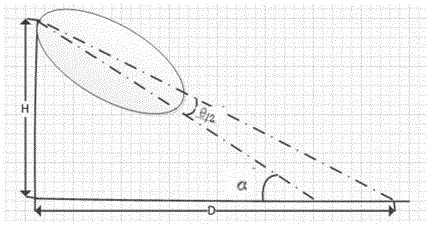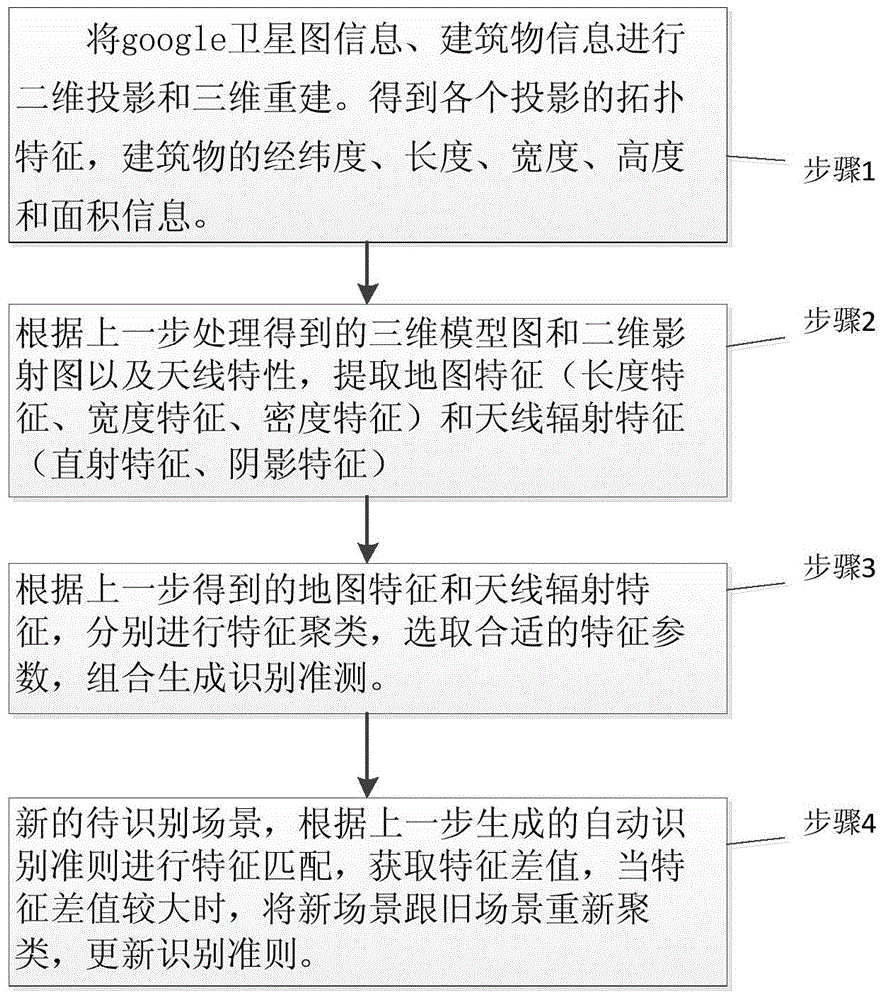Wireless communication network intelligent-antenna-covered scene automatic classification and recognition method
A wireless communication network and smart antenna technology, applied in wireless communication, network planning, electrical components, etc., can solve the problems of affecting the height of the antenna erection, the performance of smart antennas differing greatly, and the effect of affecting the performance, so as to increase objectivity and feasibility. Operability, avoid subjective grouping, and eliminate the effect of randomness
- Summary
- Abstract
- Description
- Claims
- Application Information
AI Technical Summary
Problems solved by technology
Method used
Image
Examples
Embodiment Construction
[0048] Such as figure 1 Steps shown:
[0049] Step 1: 3D geographic information processing, through MapInfo software, 2D projection and 3D reconstruction of google satellite map information and building information. Obtain the following required information: figure 2 Topological features of the 2D projections shown; image 3 In the two-dimensional building map shown, the centroid position of the building is marked with "+", and the information such as the length, width, height and area of the building is implicit in the map database.
[0050] Step 2 Obtain the length and width characteristics of the antenna coverage cell according to the two-dimensional projection topological characteristics obtained in the previous step. Then, according to the two-dimensional building map, as well as the antenna's normal direction, elevation, and inclination angle features, the map feature density feature and radiation feature (direct feature, shadow feature) of the community to be clas...
PUM
 Login to View More
Login to View More Abstract
Description
Claims
Application Information
 Login to View More
Login to View More - R&D
- Intellectual Property
- Life Sciences
- Materials
- Tech Scout
- Unparalleled Data Quality
- Higher Quality Content
- 60% Fewer Hallucinations
Browse by: Latest US Patents, China's latest patents, Technical Efficacy Thesaurus, Application Domain, Technology Topic, Popular Technical Reports.
© 2025 PatSnap. All rights reserved.Legal|Privacy policy|Modern Slavery Act Transparency Statement|Sitemap|About US| Contact US: help@patsnap.com



